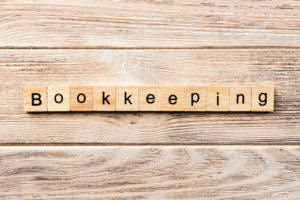
Specifically, FOB shipping point indicates that the buyer assumes responsibility the moment goods are loaded for departure. In this arrangement, the seller retains liability for the goods until they are delivered to the buyer. This means the seller bears the risk of loss, damage, or destruction during transit, which can impact their reputation and profitability.
Common Attributes of FOB Shipping
The term “FOB” was used to refer to goods transported by ship since sea transport was the main method of transporting cargo from far countries. The term’s usage has changed since then, and its definition varies from one country and jurisdiction to another. The phrase “passing the ship’s rail” was dropped from the Incoterm definitions in the 2010 amendment. We’ve reached the part of our journey where we must look for potential risks and liabilities. While FOB shipping points can provide some great benefits, it’s also important to be aware of the potential dangers lurking in the deep waters of the shipping process.
Are There Options Other Than Free on Board Freights?

When the destination is the origin port, it’s known as the FOB shipping point. In shipping documents and contracts, the term “FOB” is followed by a location in parentheses. The buyers are always responsible for the freight costs to ship products under FOB Incoterms.
What Are Some of a Buyer’s Responsibilities in FOB Transactions?
Understanding this impact helps determine when the risk of loss or damage transfers from the seller to the buyer. Determining FOB location involves carefully considering various factors such as distance, transportation mode, and shipping terms. To avoid confusion and disputes later on, it is essential to clearly define the FOB point in a sales contract. Despite the seller covering shipping costs, the ultimate responsibility and risk for the products rests with the buyer. You’ll learn how FOB shipping point impacts ownership and risk transfer, divide costs between buyers and sellers, and affect your accounting practices. For FOB Origin, the buyer assumes all risks related to damage, destruction, and loss during transit once the goods are loaded onto the chosen mode of transport at the origin point.
China FOB – Standard Rates and Timeframes

Clearly understanding these responsibilities enables a smooth transition between the parties at the handover point and avoids misunderstandings. Remember, while FOB and other what is f.o.b. shipping point Incoterms are internationally recognized, trade laws vary by country. So, if you’re buying or selling globally, review the laws of the country you’re shipping from.
- A thought leader in the field, Rakesh’s insights are shaping the future of modern-day logistics, making him your go-to expert for all things route optimization.
- Conversely, with FOB destination, the seller pays the shipment cost and fees until the items reach their destination, such as the buyer’s location.
- For small products that will inevitably be shipped by air, or small suppliers with little experience working with international buyers, you may receive quotations in EXW Incoterms.
- FOB shipping point holds the seller liable for the goods until they’re transported to the customer, while FOB destination holds the seller liable for the goods until they have reached the customer.
The seller retains liability until the buyer accepts the goods, ownership, and liability at the receiving dock, office or agreed-upon place of transfer, after inspecting for damage. With FOB shipping point, the buyer pays for shipping costs, in addition to any damage during shipping. The buyer is the one who would file a claim for damages if needed, as the buyer holds the title and ownership of the goods.
Role of FOB Warehouse in Shipping

Another term that is commonly confused to have the same meaning as FOB is CIF, also known as “cost insurance and freight”. CIF is used by sellers to maintain primary ownership of their products until they are delivered to their destination. The seller also assumes all responsibility for the shipment of these goods, so they’ll cover the cost of insurance until the goods are in the buyer’s hands. Once the shipment passes the buyer’s port of destination, all liability will then shift from the seller to the buyer. Traditionally with FOB shipping point, the seller pays the transportation cost and fees until the cargo is delivered to the port of origin. Once on the ship, the buyer is responsible financially for transportation costs, customs clearance, fees, and taxes.

The most common international trade terms are Incoterms, which the International Chamber of Commerce publishes, though firms that ship goods within the U.S. must adhere to the Uniform Commercial Code. Free on board, also referred to as freight on board, only applies to shipments made via waterways and doesn’t apply to goods transported by vehicle or air. For example, in FOB shipping point, the buyer is responsible for freight, insurance, and other costs from the shipping point onward. If you’re ordering many products from a single seller, you may have more leverage to negotiate FOB destination terms, as the cost of shipping per unit will likely be lower for the seller. DDP means “delivered duty paid.” Under this Incoterm rule, the seller agrees to deliver goods to the buyer, paying for all shipping, export, and import duties and taxes. Shipping via FOB Incoterms from China is simple, straightforward, and the ideal way to ensure your products leave China safely and arrive at your destination seamlessly.
- Determining FOB location involves carefully considering various factors such as distance, transportation mode, and shipping terms.
- FOB freight prepaid and allowed specifies that the seller is obligated to pay the freight transportation charges and they own the goods while they’re in transit.
- Sellers can enjoy control and flexibility over their precious cargo by designating their warehouse or shipping point as the FOB location.
- This means that once the goods are loaded onto a carrier at the seller’s facility, they become the buyer’s responsibility.
- Understanding who bears responsibility for any potential damage or loss during transit is crucial.
- If you are shipping less than container load (LCL), your cargo will be loaded onto the truck and taken to a warehouse to consolidate your shipment with the other consignments sharing the same container.
- DAP, or “delivered-at-place,” says a seller agrees to be responsible for transporting goods to a location stated in the sales contract.




